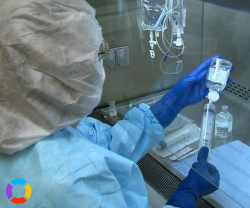New Compound Blocks the Brain’s Reward System to Treat Addiction
Chemists recently developed a new compound that quiets the brain’s reward system to reduce drug cravings and lower relapse rates in people recovering from addiction. The compound, known as OV329, is different from other drugs used to treat addiction in that it blocks an enzyme that prevents the release of dopamine — a brain chemical that plays a large role in drug addiction.
How Exactly Does the OV329 Compound Treat Addiction?

Addictive substances like alcohol, cocaine, and heroin increase the brain’s production of dopamine, which drives feelings of reward and euphoria in people who use these drugs. People recovering from addiction will experience spikes in dopamine when faced with certain triggers that would normally lead to drug use — resulting in cravings that can lead to relapse. The OV329 compound works by blocking an enzyme called GABA-AT that helps drug users stay sober by suppressing the brain’s release of dopamine triggered by addiction.
The OV329 compound was developed by Richard Silverman, a chemist at Northwestern University in Evanston, Illinois. In 2003, Silverman had developed a similar compound called CPP-115 that also blocked GABA-AT. But in recent years, Silverman and colleagues made slight changes to the structure of CPP-115 to create OV329, which binds more tightly to the GABA-AT enzyme and is 10 times more effective as a result.
When OV329 was given to rats suffering from nicotine and cocaine addiction, the compound was effectively able to neutralize dopamine and block the addictive reward response — motivating the rats to stay clean. OV329 was recently picked up by Ovid Therapeutics in New York City, which will soon be testing the compound on humans in clinical trials.
What Other Medications Can Treat Addiction?
OV329 is the latest compound to join the arsenal of drugs that can effectively treat addiction. Medications are commonly used in addiction treatment to manage withdrawal symptoms, prevent relapse, and treat co-occurring disorders such as mental illness. Many medications that exist for treating addiction are used to treat alcohol, opioid, and nicotine addiction, though scientists are continually working on developing medications to treat addiction to other drugs of abuse. The use of medications to treat addiction is known as medication-assisted treatment, or MAT.
Opioid addiction can be treated using methadone, buprenorphine, and naltrexone. Methadone and buprenorphine relieve opioid cravings and withdrawal symptoms, while naltrexone blocks the effects of opioids to help patients stay sober and avoid relapse.
Alcohol addiction can be treated using acamprosate, disulfiram, and naltrexone. Acamprosate helps reduce alcohol withdrawal symptoms, while disulfiram produces unpleasant reactions when used with alcohol to motivate patients to stay sober. Naltrexone helps reduce alcohol cravings, and is shown effective at reducing alcohol relapse rates.
Where to Find MAT for Addiction
Many states across the U.S. have expanded access to MAT to give Americans more treatment options when it comes to fighting addiction. Evidence reveals that MAT is successful at lowering relapse rates and helping patients stay clean long-term.
Use our drug detox center directory to find nearby treatment centers that offer MAT for opioid or alcohol addiction. If you’re suffering from addiction to a substance other than opioids or alcohol, look for drug detox centers that offer a medical detox, where other medications may be used to help relieve certain withdrawal symptoms.
Alternately, call our 24/7 confidential helpline at 800-996-6135 to discuss all your treatment options with one of our experienced addiction counselors. We’ll help you find drug detox centers that offer MAT and other therapies designed to help you or a loved one safely and successfully overcome addiction.

